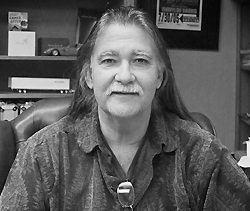To Dave Shadoan, what sets Sound Image apart are its people, partnerships built over the long haul, and most importantly, unfailing service to clients.
Clearly it’s paying off and then some, with the Escondido, CA-based company serving thousands of shows annually, with numerous touring systems out simultaneously in addition to one-offs and seasonal leases.
“I can’t think of a single incident where we’ve missed a truck, a load-in, or a show. If we say we’re going to do something, we do it,” states Shadoan, the company’s CEO/president. “In the long run it comes down to trust. People hire Sound Image because they trust our staff. Our job is to make sure artists are able to do the best they can, whether it’s for an audience of 20,000, 2,000, or 200 people. And we’re only as good as our last show.”
In addition to the headquarters in Escondido (just outside San Diego), the company also has a busy operation in Nashville while continuing to expand internationally, most recently with United Audio Companies, a venture developed with SSE Audio Group in Europe, announced in August 2015. Sound Image was also early to system integration, entering the market more than two decades ago and now with full-service staff and facilities in both Arizona and California.
Further, the company also holds 10 patents, a tribute to its focus on innovation, with one (of many) notable endeavors being a pioneer in the use of composite materials to construct loudspeaker cabinets.
Reading The Signs
“Life is a journey” goes the popular quote, and it’s personified by Shadoan. Born in 1956 in the west-central Ohio town of Sidney, by grade school he’d received an early indicator of his future.
“We took a test – I didn’t even know what it was for – then a few weeks later some of us were brought down to the lunchroom/basketball courts where there were instruments laid out on tables. ‘You’re here because you’ve shown an aptitude for music,’ I was told. Where that came from, I don’t know. But my mother loved music and loved to sing. She’d put on Elvis Presley and Conway Twitty records and get me to sing along. Maybe when you’re 5 or 6 years old you start paying attention to stuff like that.”
He chose the saxophone, both because it was the “coolest looking” instrument and one of his mother’s favorite songs was “Yakety Sax” by Boots Randolph. A gift of perfect pitch, combined with a love of mathematics and the ongoing development of an encyclopedic knowledge of songwriters and production credits, fueled his efforts to learn popular music and made him a hit with his band teacher: “By 7th grade, as homework, she’d say, ‘Dave, you’re going to write the parts for this instrument’.”
Music, however, wasn’t the main focus. In fact, his primary motivation after finishing high school was putting serious distance between himself and Sidney. So at age 18, he and a friend headed out, carrying two motorcycles in a beater panel truck that he used to carry gear and to get to shows to watch up and coming bands. In his pocket was money he’d earned at various janitorial jobs and from the sale of his ’69 Chevelle. (Even then, Shadoan, who freely admits to a “car problem,” had multiple vehicles.)
The two friends traveled up the Eastern Seaboard to New York City, through the Appalachians, and finally pivoted to California for the winter. San Diego wasn’t the final destination they had in mind, however. “Our plan was to go to Oregon, Washington, or Alaska, and get jobs in the forestry service, sit up in a big tower and look for smoke like Smokey Bear,” he laughs.
But reality intervened; funds had become scarce. “I did what everybody does when they’ve got no money: found a way to feed myself.” Owing to random meetings with people on the beach and skateboarding on the boardwalk, he discovered ways of doing so. “For example, I met a guy nicknamed Abalone Bob, who sold seafood to local restaurants. He taught me to dive, and therefore we ate quite well.”
Along the way he also imported Persian rugs and sold ‘gray market’ Mercedes-Benz autos. “And I never should have stopped,” he says, laughing. “Selling those cars, I’d literally double my money in 30 days.”















